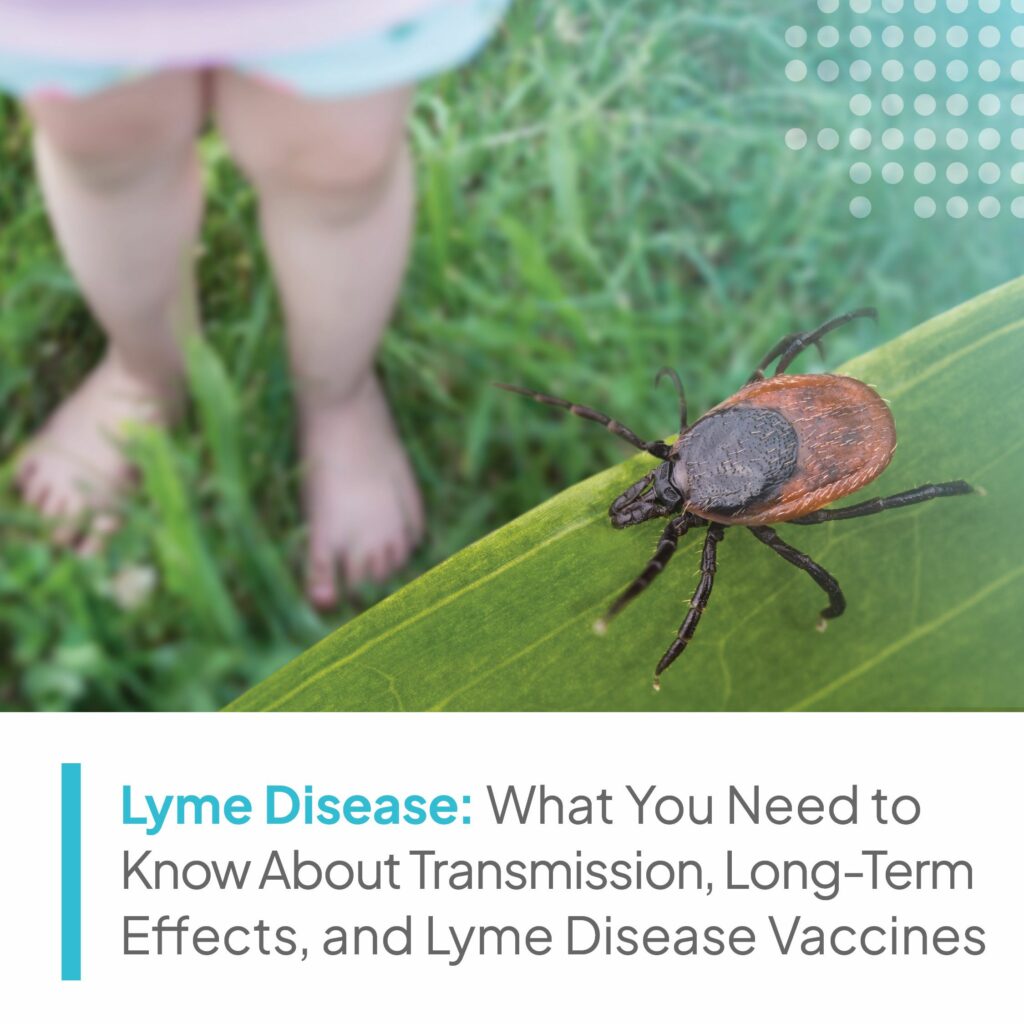You may have heard of Lyme disease through headlines about celebrities like Shania Twain, Justin Bieber, and Avril Lavigne, who announced their diagnosis publicly. Lyme disease is a bacterial infection that can cause severe symptoms if left untreated. The disease is transmitted through the bite of infected ticks, and it’s prevalent in many parts of the world, including the United States, Europe, and Asia.
Despite its prevalence, Lyme disease remains a challenging illness to diagnose and treat, and there is currently no cure. In this article, we’ll explore what Lyme disease is, how it’s transmitted, its long-term effects, the history of vaccines designed to fight it, and Lyme disease vaccines and medications currently in clinical trials.
What is Lyme Disease?
Lyme disease is caused by the bacterium Borrelia burgdorferi that is transmitted to humans through the bite of an infected tick. The disease can cause a wide range of symptoms, including fever, fatigue, headache, muscle and joint pain, and a distinctive “bull’s-eye” rash at the site of the tick bite. If left untreated, Lyme disease can cause more severe symptoms, such as Lyme arthritis, heart palpitations, and neurological problems.
How is Lyme Disease Transmitted?
Lyme disease is transmitted to humans through the bite of an infected tick. The most common type of tick that carries Lyme disease is the black-legged tick, also known as the deer tick. Not all ticks carry Lyme disease, and the risk of transmission depends on where you live and the season. In general, the risk of transmission is higher in areas where Lyme disease is more prevalent, such as the Northeastern and Upper Midwestern United States.
Ticks become infected with Lyme disease by feeding on infected animals, such as mice and deer. Once a tick is infected, it can pass the bacterium to humans when it bites and feeds on their blood. The longer a tick remains attached to the skin, the greater the risk of transmission. It usually takes at least 24 to 36 hours for a tick to transmit the bacterium, so prompt removal of ticks is essential.
What are the Stages of Lyme Disease?
Lyme disease can progress through three stages, each with its own set of symptoms. However, not everyone with Lyme disease will experience all three stages, and symptoms can vary widely.
Early Localized Stage
In the early stages of Lyme disease, most people will develop a distinctive bull’s-eye rash around the tick bite. The rash usually appears within 3 to 30 days after the bite and can range from a small red bump to a large, spreading rash with a clear center. Some people may also experience flu-like symptoms, such as fever, chills, headache, and muscle and joint pain.
Early Disseminated Stage
If left untreated, Lyme disease can spread throughout the body, leading to more severe symptoms. In the early disseminated stage, people may experience flu-like symptoms, such as fever, chills, headache, and fatigue, as well as additional rashes on other parts of the body. Some people may also experience neurological symptoms, such as meningitis, facial paralysis, and numbness or tingling in the hands or feet.
Late Disseminated Stage
If Lyme disease remains untreated for an extended period, it can cause long-term symptoms and complications. In the late disseminated stage, people may experience arthritis, particularly in the knees, as well as heart problems, such as palpitations and irregular heartbeat. Some people may also experience neurological symptoms, such as memory problems, difficulty concentrating, and mood changes.
Long-term Effects of Lyme Disease
Lyme disease can have a range of long-term effects, which vary from person to person. Some individuals may recover quickly and not experience any long-term effects, while others may continue to experience symptoms long after they have completed their antibiotic treatment. This is known as post-treatment Lyme disease syndrome (PTLDS), which can cause fatigue, joint pain, muscle aches, and cognitive difficulties.
In some cases, Lyme disease can also lead to chronic neurological problems, such as peripheral neuropathy, facial palsy, and meningitis. Other possible long-term effects of the disease include heart problems, such as irregular heartbeat and heart palpitations, and eye inflammation. These symptoms can be debilitating and significantly impact an individual’s quality of life.
History of Lyme Disease Vaccines
The first Lyme disease vaccine, LYMErix, was approved by the FDA in 1998. LYMErix was a recombinant vaccine, which means that it used a protein from the surface of the Lyme disease bacteria to stimulate the immune system to produce antibodies against the bacteria. The vaccine was found to be safe and effective in clinical trials and was recommended for individuals aged 15 to 70 years who lived in areas with a high incidence of Lyme disease.
However, in 2002, LYMErix was voluntarily withdrawn from the market by its manufacturer due to declining sales and potential safety concerns. Some individuals who received the vaccine reported developing autoimmune reactions, such as arthritis and joint pain, which led to a decrease in public confidence in the vaccine. However, subsequent studies have shown that the vaccine could be safe and effective.
Since the withdrawal of LYMErix, several other Lyme disease vaccines have been developed and are currently in various stages of clinical trials.
Current Lyme Disease Vaccines in Clinical Trials
Despite its prevalence, Lyme disease remains a challenging illness to diagnose and treat, and there is currently no cure. There are currently several Lyme disease vaccines in development, with some showing promising results in early-stage clinical trials. These vaccines offer hope for the prevention of Lyme disease, particularly for individuals who live in areas with a high incidence of the disease. However, further research is needed to determine the long-term safety and effectiveness of these vaccines.
If you are interested in learning more about Lyme disease and the clinical trials that Velocity Clinical Research is conducting to fight the disease, visit velocityclinicaltrials.com/find-study. By participating in a clinical trial, you can play a crucial role in advancing medical research and helping to find new treatments and vaccines for Lyme disease.
Further Reading
- “Lyme Disease.” Centers for Disease Control and Prevention, 2022, cdc.gov/lyme/index.html.
- “Lyme Disease.” Mayo Clinic, Mayo Foundation for Medical Education and Research, 2022, mayoclinic.org/diseases-conditions/lyme-disease/symptoms-causes/syc-20374651.
- “The Lyme vaccine: a cautionary tale.” Epidemiol Infect, 2007, https://www.ncbi.nlm.nih.gov/pmc/articles/PMC2870557/.

